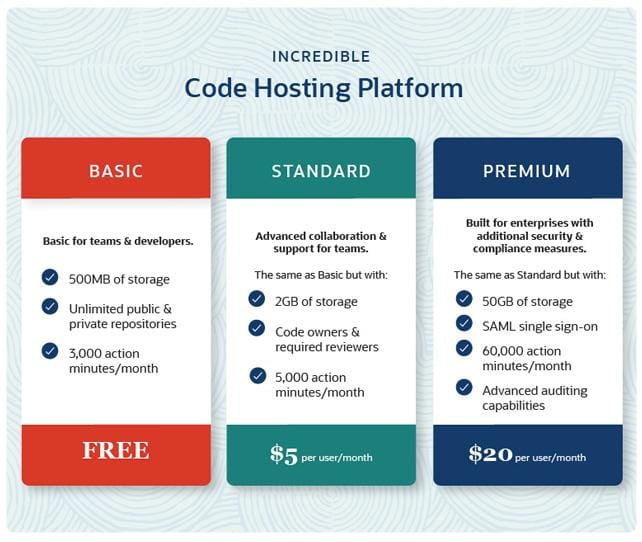In short:
- Once a company decides to pursue a subscription offering, it must make another complex decision: which subscription pricing model to use.
- Subscription pricing models range from simple fixed-rate to more complex ones that charge by usage and establish tiers.
- Companies will have to examine their product, market, competition, revenue drivers and more when choosing the best pricing model to optimally monetize their offering.
After thinking it over and analyzing the benefits, your company has decided to create a subscription offering. Congratulations! Now, a follow-up: How exactly will you price your new subscription?
As tempting as it might be to “go with your gut,” that approach will likely prove a less-than-optimal strategy for monetization, as well as for customer acquisition and retention.
Instead, the pricing question becomes three-pronged:
- Which pricing model should we use?
- Which pricing strategies can we implement to attract and retain customers?
- Which pricing method should we use to calculate the price of our product or service?
In the first of our three-part series on pricing subscriptions, we will address the first question of choosing the subscription pricing model that best serves both the company’s and customers’ needs. With models ranging from simple and fixed (e.g., flat rate) to complex and variable (e.g., usage-based), the options allow you to optimize your subscription offering for your target market.
What Is Subscription Pricing?
Subscription pricing is a revenue model where customers pay a recurring fee, typically monthly or annually, for access to a product or service, such as cloud-based software and storage. Subscription pricing provides businesses with a predictable revenue stream.
Subscription Pricing Models
1. Flat-Rate
Definition: Flat-rate, also known as fixed pricing, offers users a single price for all features of the offering. Customers are charged the same amount each billing cycle. Simply put: Flat-rate is a single product and a fixed set of features at a fixed price per month.
Best for: companies with a product that has limited features and a single buyer persona. Flat-rate does not work well for companies in which resource costs might vary significantly from user to user, which is why flat-rate pricing does not generally work well for B2B (software-as-a-service) SaaS companies, for example.
Example: A project management tool charges $150/month for the use of its platform. This cost includes unlimited projects and users and every feature the tool offers. This is an instance of flat-rate pricing because there are no other options or levels at which to purchase the tool, nor are there any additional fees.

Advantages of the flat-rate pricing model:
- Simple to understand, communicate and sell
- Easier and more predictable billing process, simplifying accounts receivable and other accounting functions.
- Frees up time for companies to focus on monetization, acquisition and retention instead of tailoring pricing strategy (due to one-size-fits-all approach)
Requirements:
- An offering that tends to be used in similar fashions and levels across the customer base.
2. Tiered
Definition: Packages with various features and product combinations are available at various price points. This allows sellers to segment the prices of their products and services based on specified target markets. Tiers are generally designated as basic, standard and premium.
Best for: Companies that may have many product features and a diverse customer base with varying needs, budgets and usage norms. Tiered pricing is very popular amongst SaaS companies, in particular.
Example: A graphic design software prices its offerings on a tiered plan, in which upgrading your plan means more storage, graphic options and capabilities.

- Flexible and scalable.
- Caters to multiple buyer personas by offering multiple price points.
- Maximizes the lifetime value of the customer, as they have the option to upgrade/downgrade as needs change.
Requirements:
- Tiers must have enough differentiation to make the value gap between them extremely clear.
Analysis Paralysis in Subscription Pricing
When pricing your subscription offering, it can be tempting to offer customers as many options as possible. However, recall the psychological phenomenon of “analysis paralysis,” which occurs when we’re offered too many options. If a customer starts overanalyzing your offerings, they may choose none at all because the complexity is overwhelming or they fear making the wrong decision.
For that reason, companies often limit their subscription pricing to only two to four options so the customer can choose which works best for them without feeling overwhelmed.
3. Usage-Based
Definition: The usage-based model, also referred to as a consumption model and pay-as-you-go, deviates from our previously-discussed models, as its pricing becomes much more variable. It directly relates the cost of a product to its level of consumption, typically involving a base rate with an additional usage rate.
Think of your cell phone plan and what happens if you blow past your monthly data allowance. Your bill will quickly make clear that you aren’t being charged a fixed, base rate — there’s a usage component. The usage-based subscription pricing model is considered the most flexible for customers, and it tends to be the most complicated for businesses.
Best for: products or services of which customers’ usage is likely to vary widely. Imagine a company with a website that’s mostly for marketing purposes versus one that makes its money on its site.
Example: An SEO tool uses a pricing plan that upgrades to different levels based on usage.

Advantages of the usage-based pricing model:
- Offers customers the most flexibility.
- Attracts new customers with the low upfront costs associated with low usage.
- Heavy users that may require more resources from the business are charged more than less-frequent ones.
Requirements:
- Companies need to have the capability and resources to monitor usage.
4. Per-Added-Module
Definition: In this model, you’ll price the product based on the functionality offered to your customers. There is a “base product” and the option to add modules for more functionality — at a higher cost.
Best for: Companies with modular functionality that is easily added to their core product — and a customer base that values the ability to choose the functionality it needs.
Example: An architecture, engineering and construction software company offers building information modeling (BIM) and computer-aided design (CAD) products. In addition to the base CAD product, customers have the option to add software offerings to their subscription based on their role (architect, structural engineer, mechanical engineer, etc.) and needs.

Advantages of the per-module model:
- Product scales with the customer
- Compensates for features that require more resources from the business to offer
- Strong upgrade incentive
Requirements:
- Companies must have multiple modules and higher levels of functionality to offer customers as add-ons or upgrades.
5. Per-User
Definition: A per-user or per-seat pricing model charges customer companies for every user of your product. Pricing scales evenly along with the number of users — the more users, the more you’ll charge. The per-user model is quite similar to the per-license model popularized prior to the era of software subscriptions. Like the per-added-module model, it’s almost always combined with another pricing model. A common variant of this model is per-active-user, in which you’ll only charge for the number of folks at the customer company who are actually using the tool. This can ease the concerns of a customer who’s evaluating your product for a large number of employees.
Best for: frequently-used or heavily-relied-upon products, particularly those that facilitate teamwork or collaboration. For example, if team members at a customer company rely on accessing your product independently, as with a virtual collaboration platform, then they each need their own account and cannot share login information. Per-user pricing inhibits your growth if only a few folks within each customer company use your product — or if it’s easy for individuals to share logins and avoid buying access for more users.
Example: A code hosting platform charges per-user and increases price based on features and functionality.

Advantages of the per-user pricing model:
- Simple to understand, communicate and sell
- Revenue scales directly with user adoption
- More predictable revenue generation than something like a usage-based model.
Requirements:
- A frequently- or heavily-used product that involves multiple users
7 Factors to Consider When Choosing a Subscription Pricing Model
1. Your value metric(s)
A value metric, also referred to as a pricing dimension or pricing axis, is the metric upon which your prices are based (i.e., what and how you’re charging). We’ve touched on some value metrics already: Users and features, for example, are common metrics upon which to base pricing. However, some companies may also charge according to metrics like:
- Subscription length chosen
- Terabytes of bandwidth available
- Ticket count received
- Number of documents created
- Number of queries received
- Support representatives assigned
- Number of support sessions offered
- Data capacity needed
- Compute power required
- Percentage of revenue generated by the product or service
- Amount of storage used
- API requests made
- Number of campaigns run
Consider creating a list of all the axes your company could charge along and evaluating each with the following questions:
Subscription Pricing Terms to Know
- Pricing Model: The subscription pricing model is the foundational payment structure that a company adopts. Models include flat-rate, consumption-based and tiered.
- Pricing Strategy: These are strategic actions around pricing that businesses take to support their growth goals. These strategies can help companies gain market share, attract new customers, cultivate brand recognition, etc.
- Pricing Method: Pricing methods refer to the process a company uses to ascertain the price of its product or service. They include cost-plus pricing, value-based pricing and competitor-based pricing.
Is it predictable?
A value metric needs to be reasonably predictable for both the customer and your company. The customer needs to predict its costs, and you need to predict your revenue. If a marketing system charged by the number of landing-page visitors or submissions, for example, then it could be difficult for a customer or the company to predict charge amounts. However, charging upfront for a certain number of marketing contacts in each tier makes it easy for both parties to track the metric and predict charge amounts.
Is it acceptable to customers?
The value metric should be easy for salespeople to sell and customers to understand; folks won’t pay for a product if they don’t understand exactly how they will be charged. And a small, family business won’t want to pay the same rate as a 10,000-person company using significantly more resources, features and seats.
Is it trackable?
For example, if you charge based on a customer’s revenue, they have to be willing to hand over their financial records — likely a hard sell.
Is it scalable?
Can the model and its respective value metrics apply to both big and small companies – and can it grow comfortably with each? Remember, a subscription model ideally extends the lifetime value of a customer and, in turn, monthly recurring revenue (MRR).
Is it aligned with value?
What do your customers value about your product? Does it justify the price being charged? Which metrics correlate the most with revenue or savings?
Some businesses might find themselves with multiple pricing axes. For instance, in our previous example, the code hosting platform charges per user. However, its pricing tiers are based on the number of actions available, storage volume, and collaboration and security features. The customer will move up the pricing ladder when they need more coding capacity or functionality. Determining these value metrics can help the customer pinpoint which tier will serve them best.

15 Key Financial Metrics & KPIs for Small Businesses: Use these financial metrics and KPIs to shed light on your company’s financial state and its short- and long-term outlook.
2. Time and resources required
You may find that a more complex subscription pricing model requires more time and resources than you’re willing and/or able to spend. The usage-based model is an obvious creator of complexity, as it requires you to track and bill variable components. The less-intensive flat-rate model may make more sense for companies whose subscription offering is a smaller portion of their overall business.
3. Your offering
Many companies will be able to narrow down their subscription pricing model options by considering their offering’s features, add-ons and upgrades. If you have opportunities to upsell or cross-sell your product, the flat-rate model will not be a good option. Other companies may have a product whose use can’t be tracked, rendering a usage-based model irrelevant.
4. Your customer base
Understand what your customers want in a subscription pricing model and which model best reflects that. Study any customer data available, and consider sending a survey or conducting interviews to answer questions like: Are your customers using your software for business or personal tasks? Are your customer companies small or large — or a mix? Do you sell to one or many buyer personas? What do customers value in your product — and how much are they willing/able to pay for it? Do they prefer paying upfront or spreading payments over time? Do they value simplicity or choice when making product decisions? Does usage vary significantly across users?
5. Your competitors
If your competitors have subscription offerings, how are they modelling them? Is there a gap that your subscription model can help fill? For instance, if another B2B company in your industry is gearing itself toward large businesses with its plan, consider implementing a tiered pricing option with the lower tiers geared toward smaller companies that may not need as many features or have as much budget.
6. Your financials
Ultimately, the pricing model you select will need to cover both the fixed and variable costs associated with your offering (plus a little extra if you want to make, you know, a profit). For example, you may find that a flat-rate model doesn’t cover your costs effectively when some users use more resources (support, storage, compute cycles) than others. In that case, a usage-based model may be a better pick to generate healthy margins.
7. The hybrid
As noted before, it is possible to use more than one subscription pricing model — you can combine them to create an effective payment structure. Common hybrids include a fixed-rate fee every month with the addition of a usage-based, pay-as-you go plan or overage additions.
NetSuite Financial Management
Recurring revenue is music to any business’s ears, so it’s little wonder why subscription pricing has become a popular revenue model. That said, subscription pricing can easily overwhelm a finance team because it involves hundreds or thousands of transactions, all of which must be tracked, billed for, recorded, reconciled and much more. That’s where NetSuite Financial Management can help — and not just in the area of revenue management. The cloud-based platform offers real-time visibility into a business’s financial performance and automates complex financial and accounting processes. For example, it streamlines billing activity for different types of pricing models, including subscription pricing, via NetSuite SuiteBilling. SuiteBilling also manages subscription changes, renews subscriptions automatically (with price increases, if applicable) and ensures compliance with accounting standards. In addition, it includes an SaaS Metric Dashboard so that stakeholders can stay on top of key performance indicators, like monthly recurring revenue and customer churn rate, and know that their decisions are based on the most accurate, up-to-date data possible.
The Bottom Line
This first step in the subscription pricing process can be intimidating, but don’t fall victim to analysis paralysis. While it does require much initial research and analysis, pricing is a continuous process subject to revisions as the business grows and markets change. There will be opportunities to tweak your approach down the line. In fact, companies that regularly revisit and update their pricing every six months see nearly double the average revenue per user (ARPU) gain over those who update their pricing only once per year or longer.
Stay tuned for Brainyard’s next piece on maximizing revenue through pricing strategies.

For more helpful information from the Brainyard and our friends at Grow Wire(opens in a new tab) and the NetSuite Blog(opens in a new tab), visit the Business Now Resource Guide.









